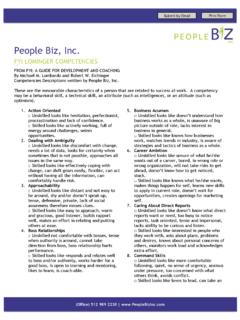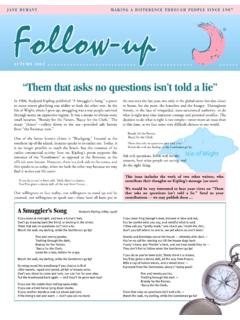Transcription of 5X Sit-to-Stand Test (5XSST) - Thompson Health
1 053 McKinly Lab University of Delaware Newark, Delaware 19716-2590 Ph: (302) 831-8893 Fax: (302) 831-4468 5X Sit-to-Stand Test (5 XSST) Description: Assesses functional lower extremity strength, transitional movements, balance, and fall risk. Equipment: Stopwatch; standard height chair with straight back (16 inches high); Therapist Instructions: Have the patient sit with their back against the back of the chair. Count each stand aloud so that the patient remains oriented. Stop the test when the patient achieves the standing position on the 5th repetition.
2 Patient Instructions: Please stand up straight as quickly as you can 5 times, without stopping in between. Keep your arms folded across your chest. I ll be timing you with a stopwatch. Ready, begin. Interpretation: Lower times = better scores MDC: sec1, 2 MCID: sec3 Age-Matched Norms4: Age Bracket Time (sec) 60 69 yo 70 79 yo 80 89 yo Fall Risk: Geriatrics -need for further assessment of fall risk: 12 sec5 -recurrent falls: > 15 sec6 Vestibular Disorders -fall risk: > 15 sec7 Parkinson s Disease -fall risk: > 16 sec8 1 Schaubert, K.
3 L. and Bohannon, R. W. (2005). "Reliability and validity of three strength measures obtained from community-dwelling elderly persons." J Strength Cond Res 19(3): 717-720. 2 Mong, Y., Teo, T. W., et al. (2010). "5-repetition Sit-to-Stand test in subjects with chronic stroke: reliability and validity." Archives of Physical Medicine and Rehabilitation 91(3): 407-413. 3 Meretta, B. M., Whitney, S. L., et al. (2006). "The five times sit to stand test: responsiveness to change and concurrent validity in adults undergoing vestibular rehabilitation.
4 " Journal of Vestibular Research 16(4-5): 233-243. 4 Bohannon RW. Reference values for the five repetition sit to stand test: a descriptive metaanalysis of data from elders. Percept Mot Skills 2006; 103(1):215 222. 5 Tiedemann, A., Shimada, H., et al. (2008). "The comparative ability of eight functional mobility tests for predicting falls in community-dwelling older people." Age and Ageing 37(4): 430-435. 6 Buatois, S., Perret-Guillaume, C., et al. (2010). "A simple clinical scale to stratify risk of recurrent falls in community-dwelling adults aged 65 years and older.
5 " Physical Therapy 90(4): 550-560. 7 Buatois, S., Miljkovic, D., et al. (2008). "Five times sit to stand test is a predictor of recurrent falls in healthy community-living subjects aged 65 and older." Journal of the American Geriatrics Society 56(8): 1575-1577. 8 Duncan, R. P., Leddy, A. L., et al. (2011). "Five times Sit-to-Stand test performance in Parkinson's disease." Arch Phys Med Rehabil 92(9): 1431-1436. PHYSICAL THERAPY CLINIC









